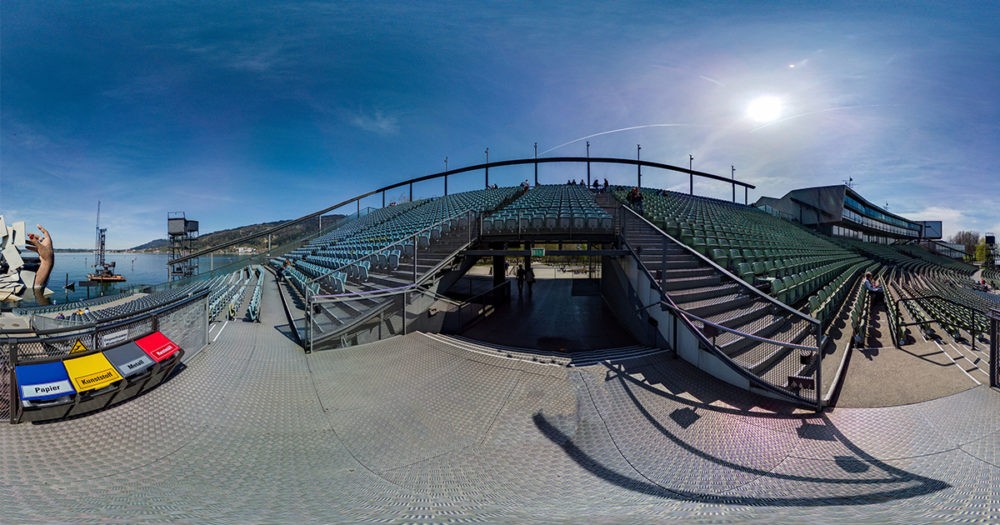Like many other people around the world, I spent time in school studying Europe’s ancient theater traditions. The great tragedies and comedies the Greeks created, and the beautiful, outdoor amphitheaters they built to stage these plays, sparked my imagination for many years as a child. When I finally got to travel to Europe as a young adult, I was thrilled to see some of those ancient theatres, with their rings of stone seats rising up before the stage. It felt almost as though I was back in ancient times, watching The Persians or Prometheus Bound. Yet, most surprising of all was this: though I loved seeing the relics of Europe’s theatrical past, what delighted me most was discovering the remarkable contemporary theater that exists across this continent. Someone once said that theater is dead. To that, I respond with a resounding no. What I discovered in European cities was that this ancient art is very much alive and worth exploring. What’s more, since it’s World Theater Day, it’s the perfect time to share some of my experiences.
I’d like to begin with puppets, and yes, I know what you’re thinking—puppets, aren’t they for children? To be frank, I once shared that perspective, thinking back to my early grade school days. Yet in the French commune of Charleville-Mézières, each year a very special event takes place: the World Puppet Theatre Festival. Before you raise an eyebrow in skepticism, let me assure you this festival is will blow you away. Whether it’s the intricate, artful, handcrafted puppets and stage design or the lyrical, surprising, and emotional performances the puppeteers deliver, this festival will expose you to an artform unlike anything you’ve ever encountered. During normal years, some 250 troupes from five continents come to the World Puppet Theatre Festival and put on over 200 shows for around 150,000 spectators. The puppeteers perform using a range of techniques, from the traditional, with glove and string puppets, to the contemporary, featuring puppets controlled by rods or even shadow theatre. The point I’m trying to make is this—these performances using puppets opened my eyes to a whole new dimension of theater, and I’m confident they will do the same for you.

Did you know that this summer, the Bregenzer Festspiele in Austria will host the opera, Rigoletto by Giuseppe Verdi, on the world’s largest floating stage? Ok, I hear you, Rigoletto being written in 1851 does not exactly make it contemporary. But hear me out. The way the opera is staged is as contemporary as it gets. Floating atop the beautiful Lake Constance, actors will deliver a performance to a large audience seated in the stands. When I attended this festival a few years back, the main performance was the Magic Flute, by Mozart, which is another classic opera from a long time ago. Yet, the production was stunningly modern, especially the two giant red dragons that stood on each side of the stage. From the promotional photos, Rigoletto will not disappoint. With a round stage and a giant clown’s head floating above it (this clown can even change its expressions), the production promises to be as memorable as the one I saw. For pictures of this incredible stage, just do an online search! A note: if this summer turns out to be too soon for a trip to Europe, I’m certain that next year’s production will be just as stunning as this year’s.

The third theater experience I had in Europe that deeply marked me was in the city of Sibiu, in the center of Romania. For nearly thirty years, the Sibiu International Theatre Festival has brought some of the world’s top performers to Romania to deliver ten days of extraordinary performing arts. The year I attended the festival, the theme was Love, which drew tens of thousands of people to this picturesque city to witness actors of all nationalities, ages, and specialties dress up in costume and take to the stage. The result was some of the most intimate, expressive and generous performances of current theater I had ever seen. As a bonus, the performances were not contained to the space within the theater walls, they spilled out into the streets! From dramatic skits to musical acts and just about everything in between, this festival turned Sibiu into a melting pot of current culture, art, and expression. One of my most cherished memories in Romania was watching a band connected with the festival perform on the cobbled streets while I ate a piece of alivenci, a traditional Romanian pie. Appropriately, the theme of the 2021 festival is Building Hope Together.

In thinking back to my memories exploring Europe’s contemporary theater scene, one feeling dominates my recollections: that this continent is home to people on the forefront of artistic life, people who are shaping the culture of tomorrow. Where are they sharing their artistic creations with those who are interested? European cities. The other key lesson—cities that are slightly off the beaten trail, such as Charleville-Mézières, Bregenz or Sibiu, are often where you will find unexpected gems of theater—and art of all kinds. When traveling is again possible, consider visiting some of these cities to discover the art you crave. As a #CreativelyCurious person, that’s what I did, and it made all the difference!


